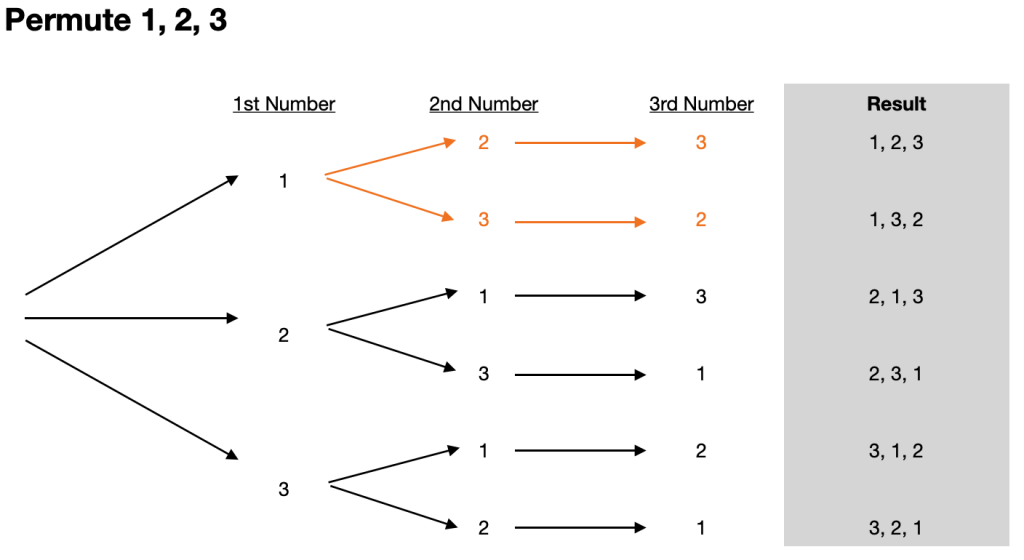
4) from 0,1,2,3 to 0,2,1,3 One possible way I found was to do a indexselect followed by cat. As a very simplified case, If I have a tensor of size (5, 4, 3, 6) I want to rearrange the above tensor along its dimension 1 (i.e.

The number of nonnegative integer solutions of the equation: x1 + x2 +. Hi, I am trying to permute the feature map dimension in a tensor. Continuing this argument, we account for these repeated arrangements by dividing by the number of repetitions. The number of ways r identical objects can be distributed among n distinct containers. Similarly, we can take any of the n 2 ! n_2! n 2 ! permutations of the n 2 n_2 n 2 identical objects of type 2 and obtain the same arrangement. For each of these permutations, we can permute the n 1 n_1 n 1 identical objects of type 1 in n 1 ! n_1! n 1 ! possible ways since these objects are considered identical, the arrangement is unchanged. But anyway, this is the formula to calculate the number of permutations: (assuming there are 4 numbers) 4 x 3 x 2 x 1.

If the objects are all distinct, then we have seen that the number of permutations without repetition is n ! n! n !. 3 Beloved, although I was very eager to write to you about our common salvation, I found it necessary to write appealing to you to contend for the faith that was once for all delivered to the saints. ("P("+input.Given a set of n n n objects such that there are n 1 n_1 n 1 identical objects of type 1, n 2 n_2 n 2 identical objects of type 2, … \ldots …, and n k n_k n k identical objects of type k k k, how many distinct permutations of the objects are there? Note that, in this case, all of the objects must appear in a permutation and two orderings are considered different if the two objects in some position i i i are non-identical. Permute 3 4 4 Esv Bible Permute 3 4 4 Esv Online Jude 3-4 English Standard Version (ESV) Judgment on False Teachers. If we observe both the outputs then the output of example 2 (b. Implementation of example 2 (a) shows permute command and example 2 (b) shows ipermute command. Along with the input we have pass order as 3 2 1.

Therefore in that set of 720 possibilities, each unique combination of three. Pnr.add(integers.subList(i, integers.size())) In this example, we randomly created an input matrix with three rows and two columns and there are three such matrices. There are, you see, 3 x 2 x 1 6 possible ways of arranging the three digits. Going back to our pool ball example, lets say we just want to know which 3 pool balls are chosen, not the order. This precisely means that my program prints all possible P(n,r) values for r=0 to n. The numbers are drawn one at a time, and if we have the lucky numbers (no matter what order) we win The easiest way to explain it is to: assume that the order does matter (ie permutations), then alter it so the order does not matter. I have written a program to find all the possible permutations of a given list of items.


 0 kommentar(er)
0 kommentar(er)
